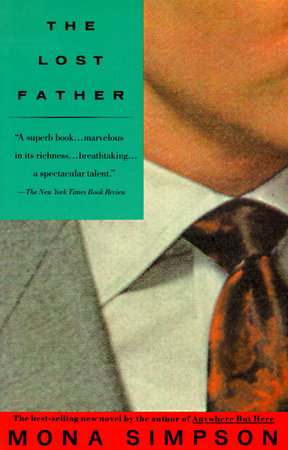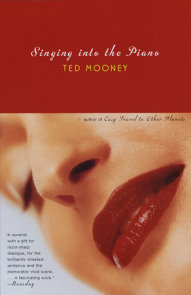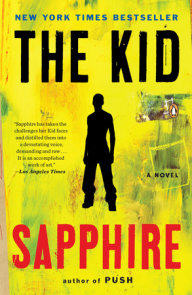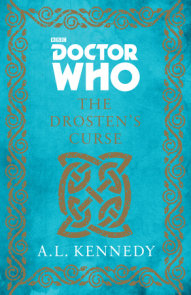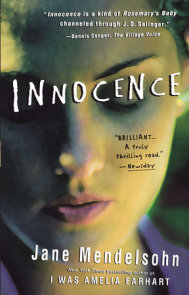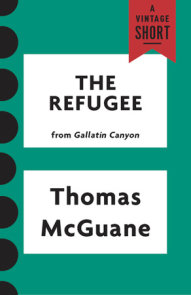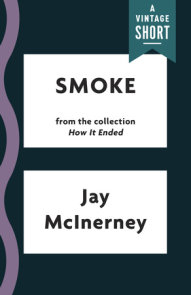READERS GUIDE
The questions, discussion topics, and author biography that follow are designed to enhance your group’s reading of Mona Simpson’s novel The Lost Father. We hope that they will provide you with new ways of looking at a novel produced by an American realist hailed by critics as one of her generation’s finest writers. With this work, Mona Simpson shows herself to be a sensitive and incisive analyst of the broken family, with an uncommon insight into the child who is at the mercy of parents who are absent, restless, narcissistic, dishonest or emotionally unstable. While it engages serious contemporary social issues, this work also makes for compulsive and deeply enjoyable reading, with characters who absorb our attention and involve us completely in their world.Introduction
In The Lost Father Mona Simpson again takes up the story of Ann August, who has begun calling herself Mayan, the name her Egyptian father gave her. Now age twenty-eight and a medical student in New York City, Mayan gives in to her lifelong desire to find her father, feeling that her life can’t continue meaningfully until she arrives at some understanding of why her father left and never bothered to make any contact with her. Mayan knows that her father is probably not worth finding, but this knowledge somehow doesn’t matter. In the course of what becomes a grueling odyssey toward a long imagined reunion, she hires a detective, spends all of her savings, drops out of medical school, stops eating, and nearly loses her mind. The last time she saw her father she was only twelve; he called out to her as they drove away, "Don’t forget I am your father. Nobody else can ever be that" [p. 138]. But it’s possible to be a father and yet not be one. And like Dorothy on the road to Oz, Mayan doesn’t know yet that the authority she seeks in her lost father can only be found within herself.In a beautifully rendered novel that examines the consequences of abandoning children as well as the psychology of obsession and female dependency, Mona Simpson has created a heroine who is wry, self-deprecating and intelligent–whose troubles are utterly absorbing, whose journey becomes our journey.
Questions and Topics for Discussion
1. In one of The Lost Father‘s most striking aphorisms, Mayan says, "All you have to do to be somebody’s God is disappear" [p. 38]. What psychological truth do you find in this statement? How does this sentence encapsulate the concerns and meanings of Mayan’s life?
2. Although this book is a sequel to Anywhere But Here, Mona Simpson says that she had not intended to write one. The germ of The Lost Father emerged one afternoon while she was at work on another novel: "I started writing a story about someone looking for her father, and it kind of took over. It was a surprise to me." Only later did it become clear to Simpson that the narrator was the girl from Anywhere But Here. (From interview with Susannah Hunnewell, The New York Times Book Review, 9 February 1992, p. 10.) Is The Lost Father nonetheless complete in itself? How are the two books different from each other? What are some of the differences in the way that Adele and Ann-Mayan are portrayed? What are the most important shifts in emphasis?
3. The Lost Father is a brilliant study of obsession and of a life hopelessly in its grip. Why does Mayan have to do what she is doing, despite its outwardly self-destructive aspects? Why does she say that not even the most terrible discovery about her father could make her give up? Does she expect that finding her father will be an ending or a beginning?
4. In what ways does Mayan behave as a woman who believes herself to be unlovable? What does the novel tell us about the particular role a father plays in shaping a daughter’s self-esteem and identity?
5. Mai linn, Emily Briggs, and Mayan are three young women who have been friends since childhood, and their upbringings contrast greatly with each other. Mai linn is an orphan who was sexually abused by her foster father; Emily is the adored daughter of a rich father; and Mayan, of course, is the neglected daughter of an unknown father. What does Simpson accomplish by juxtaposing Mai linn, Emily, and Mayan as three very different kinds of daughters?
6. What role do solitary, eccentric people play in Mayan’s life–people like Emory, whom she befriends in the hospital, or the old Chinese man who lives upstairs from her? Why do you think that Mayan is at her best with people who are alone, like herself?
7. What does Mayan learn about her father at Firth Adams College? Why isn’t she discouraged by this information? Do you think she would have done better to stop at this point? Why does the box in the back of her car make her feel that she is finally doing what she was always meant to do, that "Still, away from it all, I felt I was living my one true life" [p. 265]?
8. In Egypt, while searching for her father’s family, Mayan finds an Egyptian lover. Why is this relationship necessary for her? Why does she ignore his letters once she returns home?
9. One of this novel’s most brilliant aspects is its examination of the damage done by people who evade their responsibilities. As an adult herself, Mayan observes, "We are all endlessly telling the explanations of why we are not more. At a certain age, this begins. And for my mother and father, the explanation was still, after all these years, the other’s name" [p. 468]. Is her father as self-deluding as her mother? Are you surprised that he doesn’t seem to notice that he has done Mayan great harm?
10. Mayan’s friends–Mai linn, Emily, Stevie, Jordan–all are engaged in some aspect of Mayan’s quest and try to help her in whatever ways they can. Is Simpson calling attention to a contrast between these loving friends and Mayan’s uncaring father? Would you argue that the novel ultimately places more value on friendship than on family? What is the relation between the two?
11. What sort of a person is John Atassi? In what sense is he "lost"? How does he strike you, after all you’ve learned about him prior to his appearance in the novel? Why has he stayed with Uta as long as he has? What does Mayan learn from this seemingly anticlimactic completion of her quest? What does she mean when she says, "Maybe all searches end the same. You are changed forever but not by what you were looking for" [p. 431]?
12. The Lost Father seems to draw upon elements of a variety of narrative genres–the coming-of-age novel, the psychological case study, the road novel, detective fiction, etc. How would you categorize it? Can you think of other novels that it is indebted to or similar to?
For discussion of ANYWHERE BUT HERE, THE LOST FATHER, and A REGULAR GUY:
1. What are some of the ways in which these novels identify the problems of family life in contemporary American culture? What is Mona Simpson’s ideal of the family, and how do the families in these three novels fail or succeed in providing love, protection, identity, self-respect? Why is the importance of the child’s point of view central to all three novels?
2. In The Lost Father, Mayan says, "So much of what determined what was life and what dream was still only money" [p. 116]. In each of these works, one’s economic condition has a strong shaping influence on one’s life. Is money–or its lack–the most fateful element in life? Which characters in these works are most dependent on money, or on the idea of wealth, in imagining and creating the kind of life they desire?
3. There is a range of narrative techniques in these three novels. There are several first-person narrators in Anywhere But Here, a single first-person narrator in The Lost Father, and a third person omniscient narrator in A Regular Guy. How do these technical choices on Simpson’s part affect your experience of each of the novels?
4. About her approach to structure, Simpson has said, "I work paragraph to paragraph or even line to line…. I have an emotional sense of where things are going to, but I don’t do a whole chart or anything like that." (From interview with Susannah Hunnewell, The New York Times Book Review, 9 February 1992, p. 10.) How would you describe and differentiate the structure of these novels? Henry James fondly called the novel form "a loose baggy monster." Do you think that Simpson’s novels particularly fit this description?
5. How does Simpson control and convey the sense of time and of past and present? How important a role does memory play in these works?
6. Simpson started out as a poet, and her writing is often powerfully lyrical and imagistic. For example, in The Lost Father Mayan says of her mother, "in her private soul she is a child holding an empty glass jar waiting for the sky to fill it…" [p. 3]. What are some of the more striking images and descriptive passages you’ve noticed? How do such images affect or deepen your experience of the work?
About this Author
Mona Simpson was born in Green Bay, Wisconsin, in 1957; when she was ten, her parents separated and she moved with her mother to California. Although this detail of her life story is similar to that which makes up the core situation of Anywhere But Here, Simpson tends to be reticent about the extent to which her fiction borrows from the details of her life. She has said, "What I’d finally say about truth and autobiography is that all writers are probably trying to get at some core truth of life, at some configuration that is enduring and truthful. I just haven’t found the truth to be my vehicle." (Interview with Jonathan Bing, Publishers Weekly, 4 November 1996, p. 51.)After getting her B.A. in creative writing at Berkeley, she did an M.F.A. at Columbia, where she began work on Anywhere But Here. Upon finishing her M.F.A. she worked for several years as an editor at the Paris Review. Since the enormous success of Anywhere But Here, Simpson has written The Lost Father and A Regular Guy, which have contributed further to her impressive critical reputation. She was named one of Granta‘s Best Young American Novelists and has won several prestigious awards, including the Whiting Writer’s Award, a Guggenheim grant, the Hodder Fellowship at Princeton University, and a grant from the Lila Wallace-Reader’s Digest Foundation. Since 1988 she has taught at Bard College, where she is the Sadie Samuelson Levy Professor of Languages and Literature. She lives with her husband and son in New York City and in Santa Monica, California.
Suggested Reading
Fiction and poetry:Russell Banks, Continental Drift; Raymond Carver, Where I’m Calling From; F. Scott Fitzgerald, The Great Gatsby; Richard Ford, Independence Day; Mary Gordon, The Shadow Man; Mary Karr, The Liars’ Club; Jack Kerouac, On the Road; Henry James, What Maisie Knew and The Awkward Age; Marilynne Robinson, Housekeeping; Mark Twain, Huckleberry Finn; Anne Tyler, The Accidental Tourist; Tobias Wolff, This Boy’s Life.









